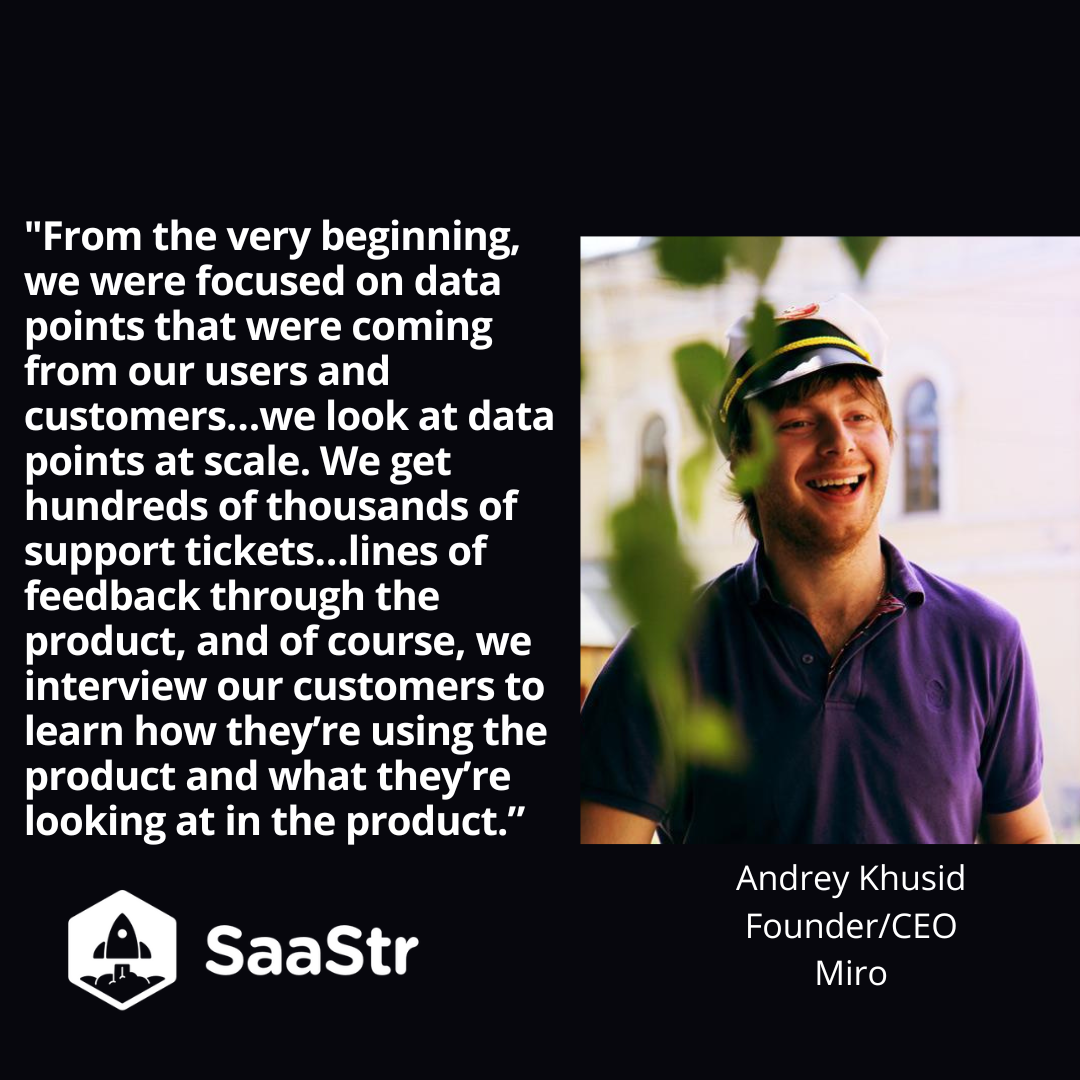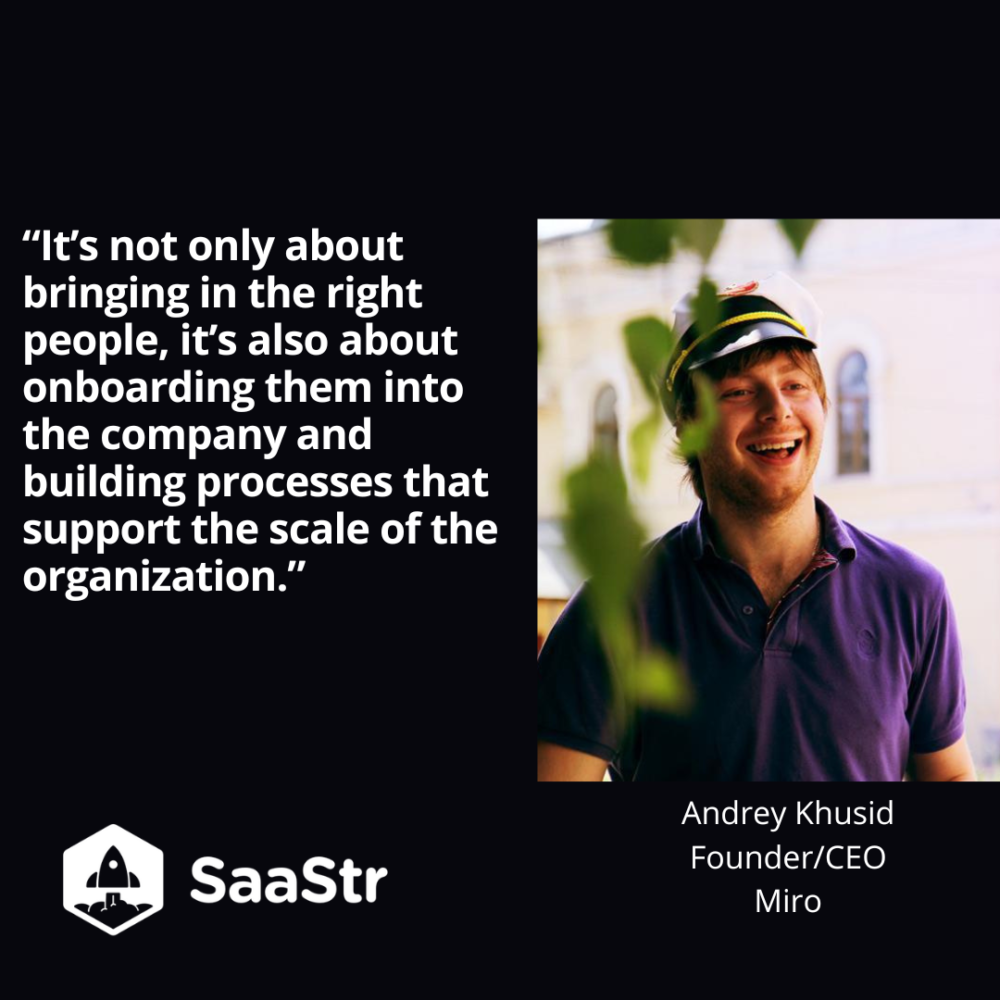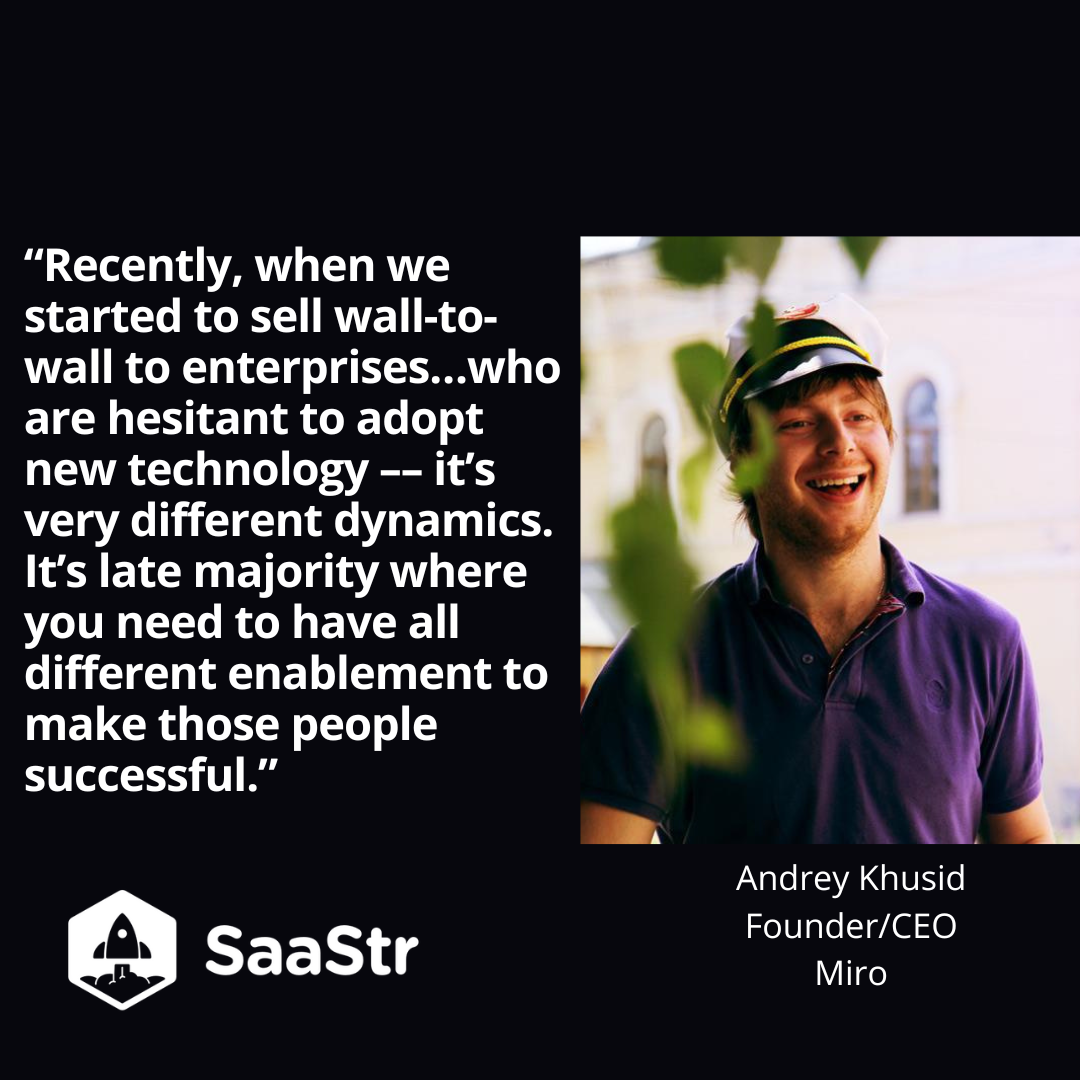While there are universal truths that every SaaS founder should put into practice, each company’s journey is different. The key to success is patience, adaptability, and commitment to customers. These pillars helped propel Miro, a visual collaboration software company, to a valuation of $17.5 billion after raising $400 million in Series C funding. In this SaaStr Europa 2022 session, Matt Jacobson, General Partner at ICONIQ Growth, interviews Miro’s Founder & CEO, Andrey Khusid, to get insight into how he was able to grow the company so successfully.
User Experience and Building a Durable Business
Miro was founded in 2011 and has iterated on its product and expanded its audience widely over the years. Khusid explains the company’s ability to perfect the user experience to such a horizontal group with its attention to data and feedback: “From the very beginning, we were focused on data points that were coming from our users and customers…we look at data points at scale. We get hundreds of thousands of support tickets…lines of feedback through the product, and of course, we interview our customers to learn how they’re using the product and what they’re looking at in the product.”
Leadership took user feedback seriously, and spent lots of time iterating on the product to ensure that users could get the most value from it. However, if you want to build a successful product, you must also create a best-in-class service experience as well. From day one, a strong support team was a priority, as well as product education and a self-service community.

Currently, Miro is one of the fastest-growing companies at scale, but it didn’t take off immediately at the same velocity in 2011. So why did it take so long to grow so explosively? Khusid credits the slower start to building the perfect product and ensuring they had the right audience. Originally, Miro was a B2C company, but after listening to customer feedback over the years, they realized the software was being used in a productivity-oriented capacity. So they shifted their strategy to become more B2B and, in doing so, realized that they could tap into an even more thriving market. This shift propelled the company into an upward climb and helped build a durable business based on a data-backed strategy.
Learning Through Changes
The pandemic years spiked the demand for more technology and collaboration tools, which meant growth and learnings during a time of significant momentum for Miro. The company needed to hire more leadership roles and middle management to keep up. Says Khusid, “It’s not only about bringing in the right people, it’s also about onboarding them into the company and building processes that support the scale of the organization.” He cautions that even when you need to hire and add more people to your organization, be careful to keep your agility as a business to stay operating optimally.

Miro also had to grapple with a shifting audience. Now, larger companies were interested in using the software, which required a completely different sales strategy: “Recently, when we started to sell wall-to-wall to enterprises…who are hesitant to adopt new technology –– it’s very different dynamics. It’s late majority where you need to have all different enablement to make those people successful.”
Previously, Miro had been very product-sales forward, but now they needed a new motion to capture the enterprise market. So, to drive adoption, they created more sophisticated sales enablement and customer success. However, Khusid maintains that the similarity between the early adopters and late majority adopters has been their desire for the product’s simplicity. Create a valuable solution that’s easy to use, and you will ensure success.

Key Takeaways
- Focus on the product and build the best value you can. Customers and investors will follow.
- Consider how you introduce new talent into your organization –– onboarding and company culture are essential.
- Prepare for a stellar user experience from the beginning.

